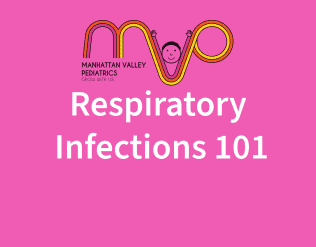Types of Bug Bites, Stings, Repellants and more!
As the weather warms up and we spend more time enjoying the outdoors here in New York City, it’s important to be prepared for potential insect encounters. While most bug bites are just annoying and itchy, some can occasionally lead to infections or allergic reactions. But don’t worry – by understanding the different types of insect bites and using some simple prevention strategies, you can help keep your family safe while still having fun outside this summer.
The most common insect bites we see here in the city are from mosquitoes, bed bugs, ticks, spiders, ants, chiggers and fleas.
Let’s start with the Numero Uno Offender: Mosquitos
Mosquito bites are very common, especially in the evening hours. Most mosquito bites cause some itchiness and redness, but mosquitoes rarely transmit viruses like West Nile. We will most likely see your child for an infected bite caused by scratching and getting bacteria in the bite’s opening. Keeping the bite clean and helping to control the itching will lessen the likelihood of developing an infected bite.
Ticks:
Ticks are sometimes found in parks and green spaces. Be sure to check your child thoroughly for any ticks after playing outside, as they can carry Lyme disease and other infections. Carefully remove any attached ticks with tweezers. Check out our Instagram post on Ticks & Lyme Disease for more detailed info.
Spiders:
Spiders are usually harmless, but occasionally, bites from black widow or brown recluse spiders can cause more serious symptoms. If your child develops significant pain, swelling, or other worrisome symptoms beyond the bite area, give us a call.
Bed bugs, fleas, ants and chiggers:
Bed bugs, fleas, ants, and chiggers can all cause very itchy clustered bumps. Oral antihistamines and topical anti-itch creams can provide relief. Let us know if the bites are worsening or spreading. To learn more about bed bugs and other “fun” things check out our blog on “All the things haunt you late in the night in one blog post!”
Repellents & Other Preventative Tips
The best way to prevent bug bites is by wearing insect repellent outdoors, especially at dawn and dusk. For kids, we recommend repellents with the active ingredients DEET (at 30% concentration or less), picaridin, or oil of lemon eucalyptus, which are all safe and effective. Avoid combination sunscreen/repellent products.
- DEET (N-diethyl-meta-toluamide): DEET is one of the most widely used and effective
insect repellents on the market. It provides long-lasting protection against mosquitoes,
ticks, and other biting insects. DEET is available in various concentrations, with higher
concentrations offering longer-lasting protection. While DEET is generally safe when
used as directed, it’s important to follow the instructions on the label, especially when
applied to children. - Picaridin: Picaridin is another effective alternative to DEET. It blocks the
insect’s ability to locate its prey through scent. Picaridin is odorless, non-greasy, and less
likely to cause skin irritation than DEET, making it a popular choice for sensitive skin users. - Oil of Lemon Eucalyptus: Derived from the leaves of the lemon eucalyptus tree, this
natural repellent has been found to be as effective as low concentrations of DEET. It
provides protection against mosquitoes and ticks and is suitable for use by both adults
and children over the age of three. However, it’s important to note that oil of lemon
eucalyptus should not be used on children under three years old. - Permethrin: Unlike other repellents that are applied directly to the skin, permethrin is
designed for use on clothing, gear, and outdoor equipment. It repels and kills ticks,
mosquitoes, and other insects on contact, providing long-lasting protection even after
multiple washes. Permethrin-treated clothing is especially recommended for individuals
spending extended periods of time in tick-infested areas.
In addition to using repellents, there are several other measures you can take to minimize your
risk of insect bites:
● Wear long sleeves, pants, and socks to cover exposed skin.
● Avoid outdoor activities during peak insect activity times, such as dawn and dusk.
● Remove standing water around your home to eliminate mosquito breeding grounds.
● Perform regular tick checks after spending time outdoors, especially in wooded or grassy
areas.
Bee stings and other bugs that “sting”
Bees, wasps, hornets, and yellow jackets are the most common stinging insects. Stings usually cause immediate pain, redness, swelling, and itching at the sting site.
Some people can have severe allergic reactions to stings. If your child starts to develop widespread hives, facial swelling, difficulty breathing, dizziness, vomiting, or other symptoms beyond the sting location, seek emergency medical care right away, as this could be a sign of anaphylaxis. If your child has a known allergy, always carry an epinephrine auto-injector.
For mild reactions, remove the stinger if it is still present by scraping a credit card across the skin. Icing the area can ease pain and swelling. You can give ibuprofen or acetaminophen as needed. Check out our dosing guide for your child here on our website. Apply hydrocortisone cream and oral antihistamines for itching.
Fire Ants
Fire ants are another insect that can sting. These stings often look like pus bumps and can be very itchy. Treat them similarly to other stings and give us a call if the reaction seems to be worsening.
We hope this overview of insect bites and stings has been helpful! As always, please don’t hesitate to contact our office with any concerns about bites, stings, or other health issues. We’re here to help keep your family healthy and safe as you enjoy the great outdoors this season! For more on repellent, Deet and bug bites questions, watch Dr. Hoffman’s Instagram Live.




